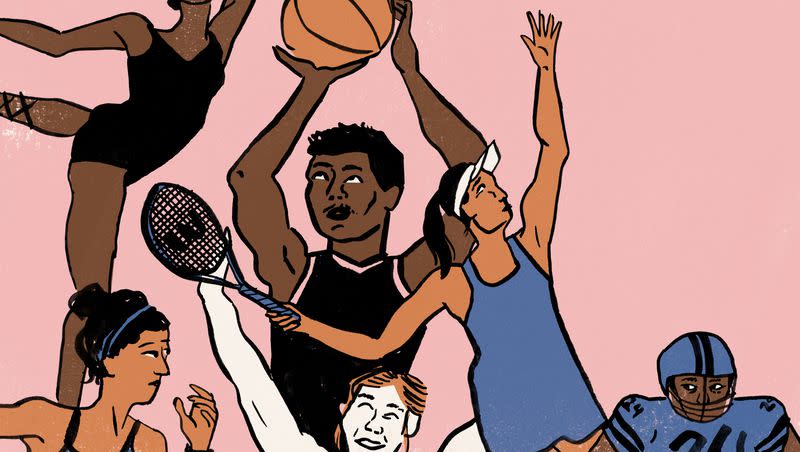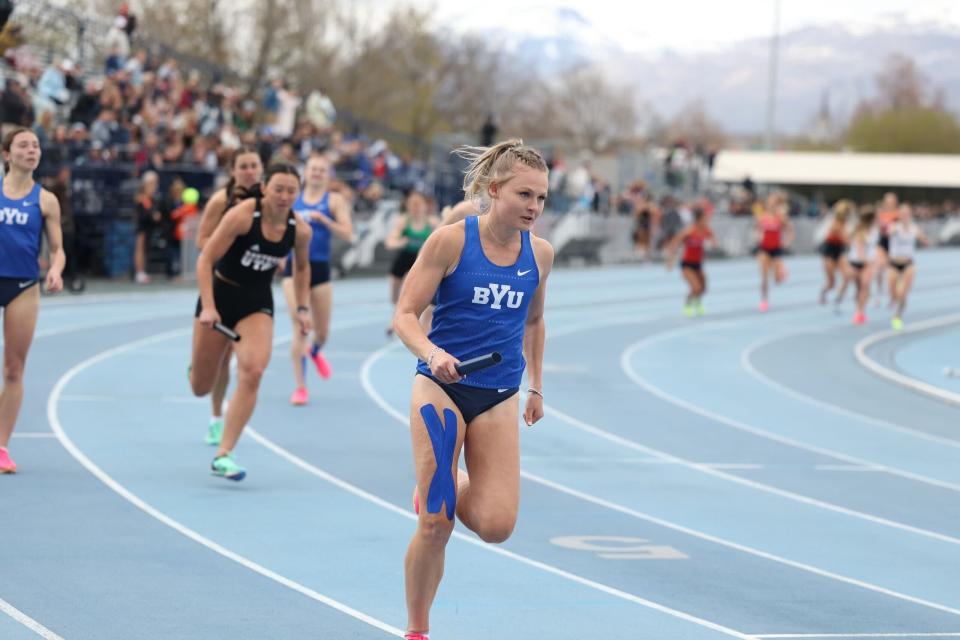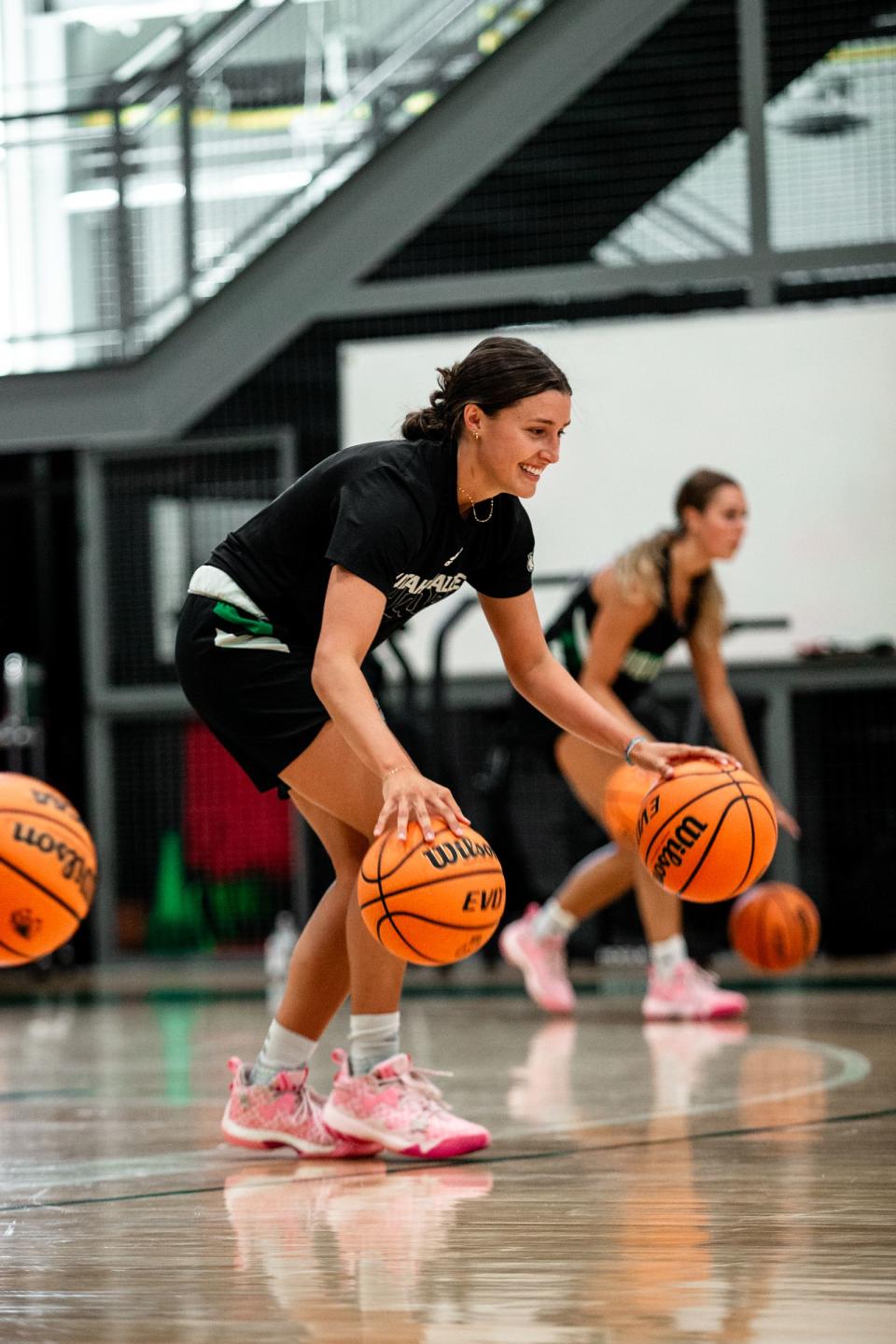Medals, meals and mirrors: Body dysmorphia in young athletes

Last year, Richard Dana, age 20, awaited his turn onstage, dancing his nerves away before he was called into the spotlight.
He was on the verge of finding out if his rigid diet and steady workout routine from the last 16 weeks paid off — or if he was going to place below someone else in this bodybuilding competition.
Dana’s been competing in bodybuilding since he graduated from high school. He told the Deseret News that sports created a standard of health in his life that wasn’t there before.
“It set my life straight for help.”
Growing up, Dana said his father made cruel comments about his body. He said he was told, “I was fat, and nobody would love me if I was fat. And that nobody would want be my friend.”
That kicked off a cycle of body dysmorphic disorder focused on his weight when he was young — and constant fear that he weighed too much.
Body dysmorphic disorder can take many forms, from thinking you’re too fat or too thin, too muscular or not muscular enough. It’s an obsessive focus on body and appearance that can interfere with life.
Ariel Ravid, a clinical psychologist who specializes in obsessive-compulsive disorder and body dysmorphic disorder at the Evidence Based Treatment Centers of Salt Lake City, told the Deseret News that many things can cause body dysmorphic disorder, but “traumatic events or adverse childhood experiences can increase the likelihood.”
Dana now chooses to focus on the good. That day last year, he won first place in his division at the National Physique Committee Tournament of Champions — fulfilling a dream he’s had since he was 12.
“I had the most overwhelming sense of joy and confidence in myself, because that was the hardest thing I’ve ever done,” Dana said. “I just wanted to cry, basically.”

“I believe I’m getting better at overcoming it (BDD) every day. There are some days that are worse than others. I’m having more good days now,” he said.
Dana’s not the only young athlete who’s struggled with body image issues. Abby Hendricks, Tessa Chaney and Brilee Pontius are fellow young athletes who compete in a sport. They’ve found that while sports keeps a standard of health in their lives, it also creates a complex relationship with their bodies.
Body dysmorphic disorder
The Deseret News interviewed multiple young athletes who said they experienced body image issues, and even body dysmorphic disorder, to get their take on how sports impacted their image of themselves, and how they overcame their struggles.
Body dysmorphic disorder is a mental health condition where someone perceives a defect or flaws in their appearance — which may look minor or invisible to others — and are unable to control negative thoughts they have about how they look, per the Mayo Clinic.
Sometimes people with body dysmorphia disorder will experience intrusive thoughts for hours at a time, Ravid said.
In order to cope with negative thoughts and emotions, they will engage in compulsive behaviors and rituals that could include checking the mirror too much in a day, excessively working out, binge eating or cosmetic surgery consultations.
They’ll also spend a lot of time trying to mask how they feel or do things to get rid of the bad feelings they have about the way they see themselves. “If you’re spending hours a day thinking about the way you look, it makes it hard to live a life of meaning and value,” Ravid said.
The disorder could affect up to 10 million people in the U.S. and possibly more since people avoid revealing they have the disorder’s symptoms due to shame, according to the International OCD Foundation.
Said Ravid, who belongs to the foundation, “People can have a number of different risk factors” that lead to developing body dysmorphia. “It’s this really complex interaction between your vulnerabilities and your environment.”
The slippery slope of sports
For athletes, the environment of constant improvement and competition against peers has the power to magnify body image issues because of its focus on performance and potentially body shape, Ravid said.
Hendricks and Chaney agreed with that assessment. They currently play for Utah Valley University’s women's basketball team as a point guard and center, respectively.

“With sports, there’s always someone bigger, stronger, faster,” Chaney said. Just the nature of the environment can make it hard to focus on improving individual performance instead of being motivated by comparison.
Hendricks said being a student athlete can be difficult since academic achievement is another thing to worry about, on top of the mental and physical stressors of competing — and emotionally, you’re just trying to balance everything at once.
And what position you play can impact what your body looks like.
As a center, it’s Chaney’s job to be strong, while Hendrick’s job as a point guard is to be speedy on the court.
“Sometimes I find myself comparing myself to other players who may be (weight) lifting in a different area more than I am. But at the end of the day, I play a different position,” Chaney said.
She said she has sometimes thought, “Oh, I wish I was a little bit thinner. I wish I had better legs, but the lifting we do, it’s different.”
Female runners may think “I want to have muscle, but I don’t want too much muscle, to where I don’t look like a female anymore. But you need muscle to run,” said Pontius, a track runner for BYU.
In Pontius’ experience, there can be “a very delicate balance that can lead to a slippery slope” if you get in the wrong mindset. “You see all these girls in the locker room all the time. So you’re constantly seeing all these bodies. So you’re trying to be the strongest, but also the skinniest, but also the fastest.”
A love, hate relationship
All these athletes say they have experienced a love/hate relationship with their bodies — love for what it pushes them to do or become, and hate if they don’t reach a certain standard. Athletic performance and societal pressures are standards they might measure themselves against.
Chaney, who’s 6-foot-2, said, “When I’m playing sports, and I’m in athletic gear, and I’m working out and in the gym, shooting and practicing, I love how my body looks.”
Once off the court, societal pressures make her feel abnormal and not “what a girl is supposed to look like.”

When you’re becoming a teen or young adult, “the focus on how other people perceive you is really, really important,” Ravid said. It’s a very impressionable time in life and plays a big part in developing mental health conditions, including body dysmorphic disorder.
“You’re just learning how to navigate society, to date and how to be part of community, and those are all normal and typical concerns at that age. And so, if you have these body dysmorphic concerns, they’re just more pronounced at that time,” he said.
Ravid said that body dysmorphic disorder in college students is almost twice as high as in any other demographic. But your body is bound to change as you age — a fact Hendricks said needs to be embraced.
Your body is going to “look different in different stages,” so learning to love the change is key to staying happy, Hendricks said.
Seasons and struggles
Pontius, a BYU track athlete, said that her entire life she felt like a twig until running helped her gain more muscle. In the beginning, the muscle gain helped her feel more normal, like she looked like everyone else.
But last season, she found her self-confidence declining, partly due to body image issues, and sought guidance in a counselor’s office.

Pontius told the Deseret News that during track season, she and her teammates are “burning so many calories, so we’re always hungry. And we’re training so much that we’re not really worried about our weight.”
But during the offseason, it’s different because you’re not working out as intensely. Food can be disregarded easier, so she’ll find herself skipping meals or having candy for breakfast because what she eats “doesn’t matter.”
She may weigh herself multiple times a day, wondering if she’s burning enough calories.
Thoughts like, “How much faster could I run if I just knocked off three or four pounds?” are common in the sport, Pontius said.
And body dysmorphic disorder may manifest itself differently between men and women.
Ravid said, “Body dysmorphia can be about a number of different parts of your body,” or about just one part of the body. “Men are more likely to have muscle dysmorphia,” which is an intense focus on “whether you have enough muscles.”
Pontius said, “If you just feel miserable all the time, then that is not a way to live your life. I found that out. You look unhealthy.” She added that “whenever I’d find myself getting into that mentality again, I just remember how much stronger, just how good overall, I feel when I’m actually eating and feeding my body right.”
Related
What if you struggle with body dysmorphia?
People with body dysmorphic disorder should seek evidence-based treatment that includes cognitive behavioral therapy and possibly medication, Ravid said.
“There are things you could do; there is self-help” — like getting good sleep, having good social connections and eating regularly — but none of those will “necessarily address the BDD directly,” Ravid added.
He also recommended the International OCD Foundation as a resource for people if they have concerns about the disorder. Through the foundation, they’re able to educate themselves on different mental health illnesses and different treatments needed for each of them, as well as help finding a therapist.
“I think that therapy is a great way to not fall into” bad mental habits, Pontius said. Counseling helped her to not think too critically of her body.
Dana recommends taking everything one step at a time when you’re hard on yourself. “Slowly build up courage from there. And look back at old photos of yourself to see how far you’ve come.”
Hendricks and Chaney said a good environment can make all the difference in how you perceive yourself. “For us, we’re fortunate to be in an environment where we have teammates that are very uplifting. We always cheer each other on in the weight room. We’re always laughing and dancing and cheering each other on,” Hendricks added.

Hendricks said her personal goal is keeping “a good, healthy balance of, you know, I did good today, I did enough. And maybe I could have done a little bit more today.” It’s a process everyone has to figure out for themselves, she said.
Chaney said staying consistent in how she views herself has helped the most. “Looking at the numbers (meaning weighing or measuring yourself) can be so self-destructive.”
And in the end, “There’s no need to look at someone else, and wish you were them, when people look at you and wish they were you,” Chaney said. “You only get one body, right? The thing is, don’t waste your life purpose on comparing yourself to everyone else. You’ve got way too much to do.”